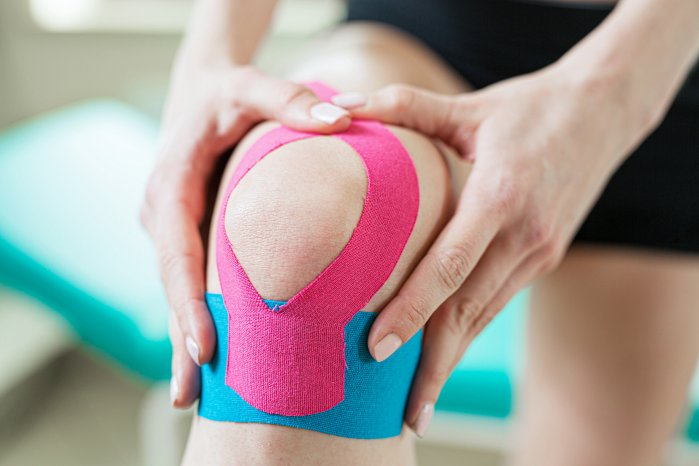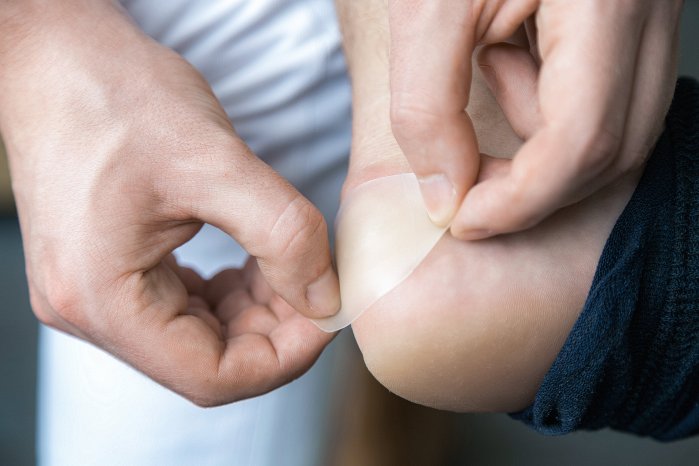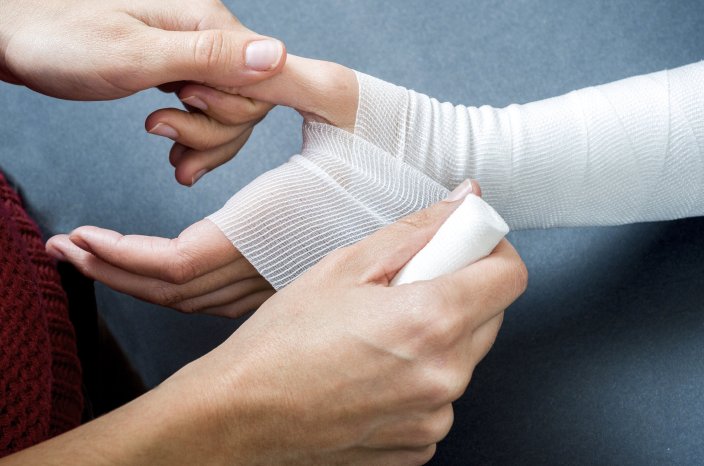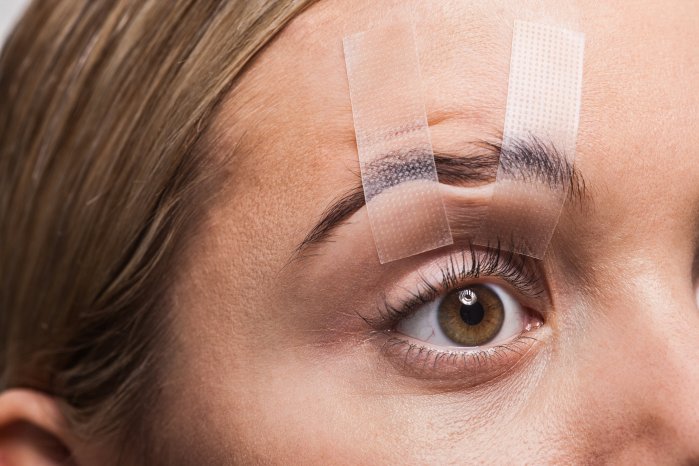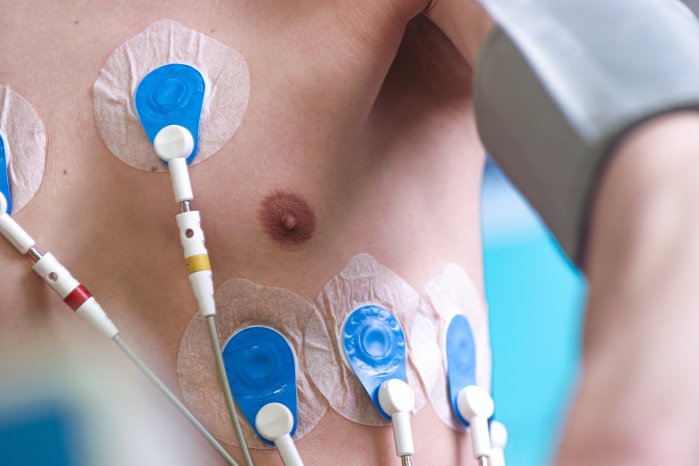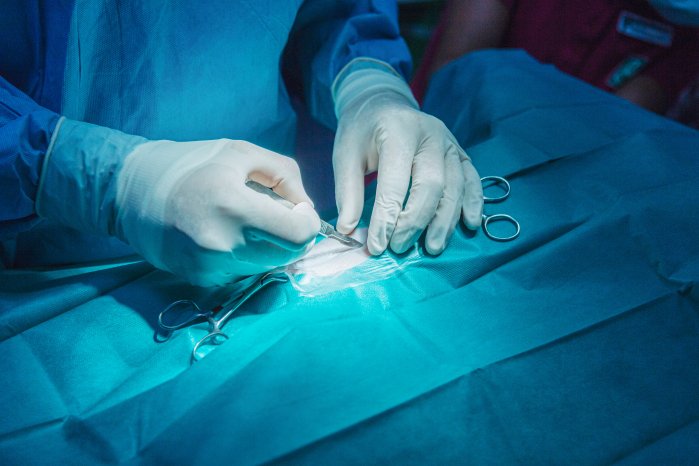Individual
A complex surface like this brings with it tough demands for the adhesives that need to stick to it. On top of that, the uppermost layer of skin – the epidermis – can also vary greatly from person to person. An individual’s age, sex, diet, perspiration, and general health all greatly affect its properties. Local climate conditions are another consideration; an adhesive bandage that performs very well in Europe may adhere poorly in Asia. All of these factors have a large influence on adhesion, in particular – and hot melt solutions are able to contend with this to a very great extent.
Demanding areas of application
Is a special adhesive bandage required for a baby’s delicate skin? Or will it be used to catheter fixation, as an eye patch or to dress a chronic wound? If so, it will need very light adhesion, known in technical terms as “very low peel”.
Conversely, a higher peel value is required if the adhesive bandage should not be removed for some time or needs to withstand a lot of strain, e.g., on a joint, under the shower or when the wearer is sweating heavily.
The basic principle is that the bandage should remain adhered for the required period of application but should then be removable with as little pain as possible and without damaging the skin.
Another consideration relates to removal; it should be possible to take the product off with as little resistance as possible, without leaving any trace of adhesive behind. This comes down to the cohesion of the adhesive and how well it is anchored to the backing material.
The solution is hot melt
The critical factor is the peel value described above. It tells you how much force is needed to remove a product bearing that adhesive. The “loop tack” quantifies how quickly bonding occurs and how much force is needed to separate an adhesive from a substrate immediately after the two surfaces have been put in contact with each other, without the application of force. As such, it is used to compare initial bonding.
The peel and loop tack values should be as low as possible for an adhesive bandage that is, intended to be suitable for sensitive skin. This makes artimeltlowpeel ideal for wound dressings on sensitive skin, particularly in elderly people and children, for eye patches and catheter securement, and for pressure ulcer care. If a stronger bond is needed, you may opt for a product with a higher peel. The artimelt hot melt range runs the whole gamut from lowpeel and gentlepeel to mediumpeel and strongpeel. Strongpeel products are used, for example, to dress wounds on joints or other parts of the body that move a lot. If the peel values are too high, the skin-protecting effect is lost.
Composition
Modern hot melt formulations cover the entire range of adhesive strengths. They can also be combined with other features, such as high breathability, for long periods of wear or hydrocolloid formulations that aid treatment by absorbing moisture. If desired, the adhesives are also available in white, for instance where a contrast to the substrate is required; these hot melts are free from zinc oxide and biocompatible.
Impressive features like these can be achieved through specific formulations in combination with the right application weights. The lowpeel products, for instance, use a new type of thermoplastic acrylate. The corresponding adhesives have high application weights (100 to 200 gsm), are exceedingly soft and peel away very gently.
UV-cured (crosslinked) acrylate adhesives are also used in medical applications, where they are increasingly replacing solvent-based or aqueous acrylates. The optimum combination of adhesion and cohesion can be defined on a case-by-case basis by means of the application weight and crosslinking level.
Other solutions offered by artimelt include adhesives for use when constructing products that will also come into contact with the skin, such as incision films for surgery.
Choosing the right adhesive
Finding or developing the right adhesive for a product that will come into direct contact with the skin starts with some questions:
- How long will the product stay on the skin?
- Where on the skin will the product be used?
- Are the patients bedbound, active at a normal level or athletic?
- What age groups should the product be suitable for?
- Which climate areas is it intended for use in?
- Is high cohesion required
- What carrier material will the adhesive be applied to?
The last of these questions is more important than you might imagine. This is both because of anchoring considerations, requiring the backing material to be included in the evaluation from an early stage, and because the material plays a large role in determining the properties of the final adhesive bandage.
Is animal testing necessary?
Products that come into direct contact with the skin must not cause skin irritation or sensitivities. That means that testing is needed. Experimentation on animals has long been banned for cosmetic products. It is still required for dermatotherapeutics, a category which includes adhesive bandages for use on the skin. However, this attracts criticism, both on animal welfare grounds and because the results are not always meaningful. For example, a comparison of the findings of skin tests on rabbits and humans found that nearly half of the assessments of skin irritation potential based on tests on rabbits were incorrect (M.J. Bartek et al. Skin Permeability In Vivo: Comparison in Rat, Rabbit, Pig and Man. Journal of Investigative Dermatology 58 (1972): 114–123).
The recent ISO standard, (EN) ISO 10993-23 “Biological evaluation of medical devices – Part 23: Tests for irritation” seeks to reduce, refine and replace in vivo testing for skin irritation. This includes the use of reconstructed human epidermis (RhE) models. In vitro RhE tests should therefore replace in vivo tests on rabbits in the medium term.
artimelt has not engaged in any animal testing at all for some time now. Our customers are required to put their end-products through stringent tests, which artimelt’s hot melts pass without issue.
